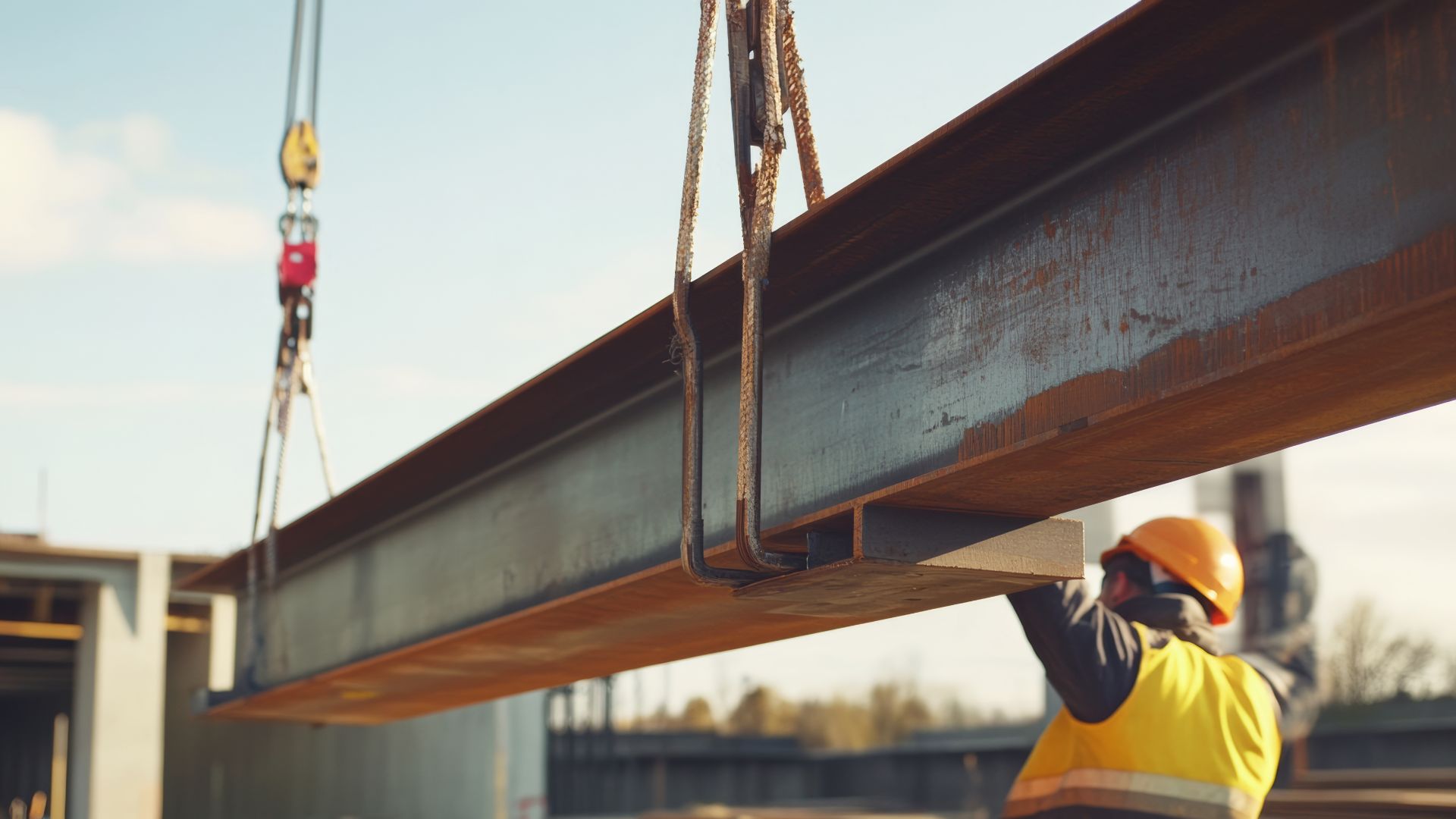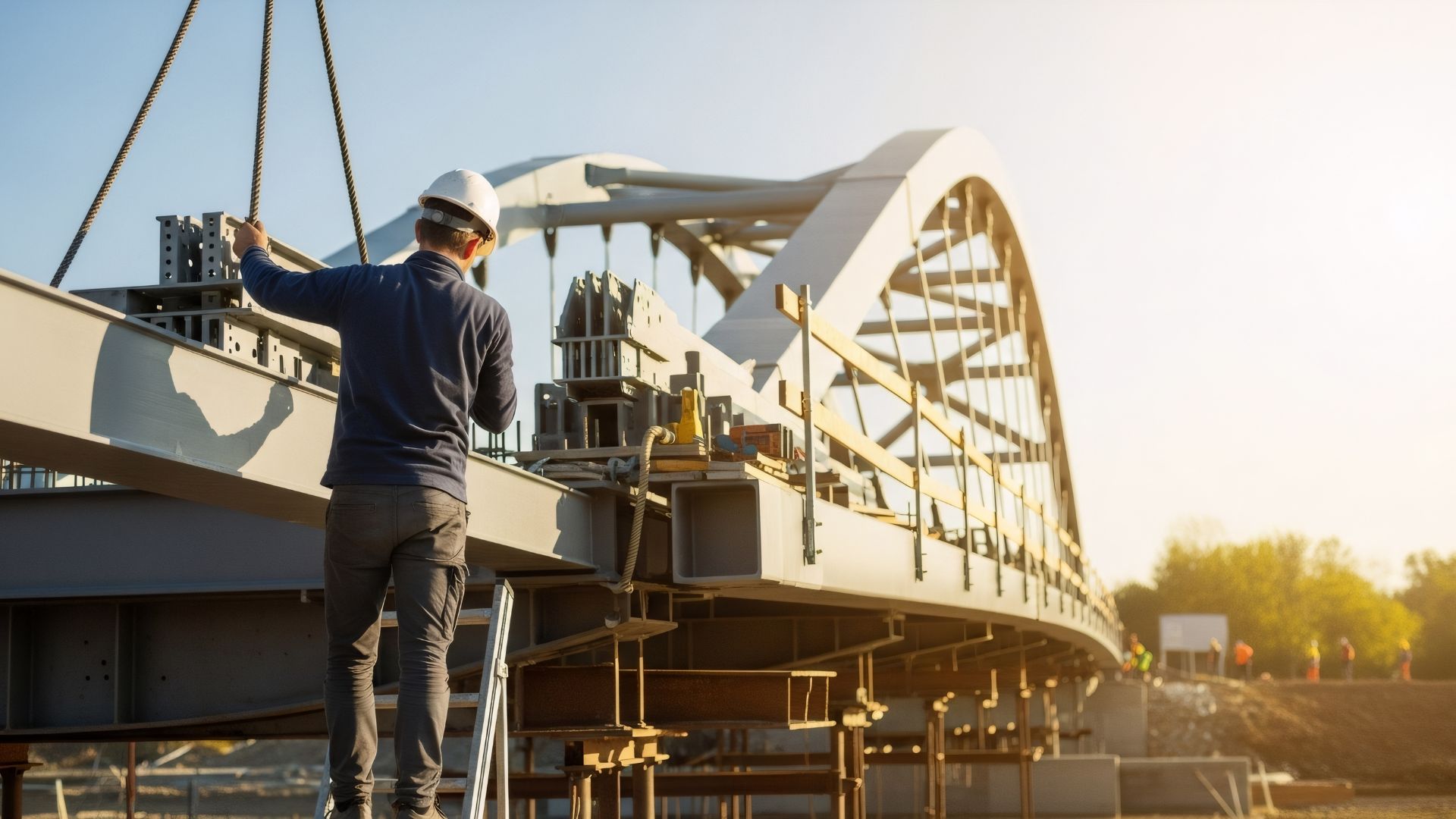 Heavy structural beams form the backbone of modern commercial and industrial construction, providing the essential strength and support that allows for today’s impressive architectural achievements.
Heavy structural beams form the backbone of modern commercial and industrial construction, providing the essential strength and support that allows for today’s impressive architectural achievements.
If you’re involved in major construction or infrastructure projects, you’ve likely encountered the challenges of selecting the right structural components to meet complex engineering requirements while managing budget constraints. Specifying inadequate beam types or sizes can lead to expensive redesigns, construction delays, and potential risks to the long-term integrity and safety of the structure.
Understanding Heavy Structural Beams
Heavy structural beams are large-dimension steel components designed to support substantial loads in building frameworks, bridges, and industrial structures. These robust elements typically weigh 100 pounds per foot or more and feature deeper profiles and thicker flanges than their lighter counterparts. Manufactured according to strict standards, these essential building elements provide the necessary strength and stability for projects where structural integrity cannot be compromised.
The primary function of such wide flange beams is to resist bending forces while transferring loads to support columns or foundation elements. Their impressive strength-to-weight ratio makes steel the preferred material for these critical components, offering superior performance compared to concrete or timber alternatives in many applications.
Major Types of Heavy Structural Beams
The construction industry utilizes several distinct types of structural steel components, each with specific advantages for different applications:
- Wide flange beams (W-beams): The most common type of heavy structural beams support elements used in modern construction, featuring parallel flanges and a consistent thickness throughout. Their excellent load-bearing capacity and dimensional stability make them ideal for primary framing in multi-story buildings and industrial facilities.
- I-piles: Similar in shape to H-piles but engineered with optimized flange and web dimensions, I-piles provide high strength for deep foundation and earth retention systems where efficient section properties and drivability are critical. They are widely used in sheet piling, retaining walls, and foundation support for bridges and waterfront structures.
- H-piles: These specialized structural sections feature equal-width flanges and are primarily designed for deep foundation applications. Their ability to be driven deep into the ground while maintaining structural integrity makes them essential for buildings on poor soil conditions.
- Related: What are H-Pile Beams? Applications and Advantages in Construction
- American Standard beams (S-beams): With tapered inner flange surfaces, these steel components offer good strength characteristics but are being increasingly replaced by wide flange options in new construction. They remain common in older structures and renovation projects.
- Miscellaneous channel beams (MC): These C-shaped steel support elements provide excellent strength in one direction and are often used as secondary framing pieces, headers over openings, or in conjunction with other beams to create built-up sections for specialized applications.
According to the AISC (American Institute of Steel Construction), using properly specified heavy structural steel beams can significantly reduce overall building weight (compared to concrete alternatives) while maintaining equivalent strength. This reduction often results in foundation cost savings and shorter construction schedules.
Standard Sizing and Specifications
Steel support sections are classified using a standardized designation system that conveys critical information about their dimensions and properties:
- Designation format: W-beams are typically designated as “W14×426,” where 14 indicates the nominal height in inches, and 426 represents the weight in pounds per foot. Similar systems exist for other beam types.
- Section properties: Engineers rely on published tables of section properties, including moment of inertia, section modulus, and radius of gyration, to calculate load capacities for different beam applications.
- Material grades: Structural steel beams are commonly manufactured from ASTM A992 steel (50 ksi yield strength), though other grades like A572-50 and A36 (36 ksi yield) may be specified for particular requirements.
- Standard lengths: These steel sections are typically available in 40′ to 60′ mill lengths, though specialty producers can supply longer spans for specific applications.
The Steel Joist Institute states that integrating wide-flange components with other framing systems early in the design process improves construction efficiency and lowers project costs.
Applications of Steel Support Sections in Construction
Heavy structural beams serve critical functions across numerous construction sectors:
- Commercial high-rises: The impressive spanning capability of deep wide-flange beams enables the column-free interior spaces demanded in premium office buildings while supporting the substantial loads of multi-story structures.
- Industrial facilities: Manufacturing plants, warehouses, and processing facilities rely on I-beam sections to support heavy equipment, material handling systems, and mezzanine levels while providing the clear spans needed for operational efficiency.
- Infrastructure projects: Bridges, highway overpasses, and transit facilities utilize H-pile beams for their exceptional strength, durability, and ability to span significant distances while supporting dynamic loads.
- Convention centers and arenas: These public venues require long-span framing solutions that W-beam sections provide, creating the column-free spaces essential for large gatherings while supporting roof systems, lighting, and specialized equipment.
- Heavy equipment supports: In industrial settings, specially designed equipment support frames, built with structural steel sections, absorb vibration and distribute concentrated loads from machinery to the building’s foundation.
Engineering Considerations for Steel Support Components
Specifying the right structural beam system involves several important considerations:
- Load analysis: Comprehensive calculation of dead loads (structure weight), live loads (occupancy, equipment, etc.), and environmental loads (wind, snow, seismic) determines the minimum required beam strength.
- Deflection limits: Beyond strength requirements, steel sections must be sized to limit deflection to acceptable levels—typically L/360 for floors and L/240 for roofs (where L represents the span length).
- Connection design: The interfaces between wide flange components and columns require carefully engineered connections that may include welding, high-strength bolting, or specialized connector elements.
- Fire protection: Unprotected steel loses its strength at high temperatures, necessitating the use of appropriate fireproofing methods. These may include intumescent coatings, spray-applied materials, or concrete encasement to meet building code requirements.
- Corrosion protection: For exposed applications or corrosive environments, steel support beams may require protective coatings, galvanization, or weathering steel specifications to ensure long-term performance.
Real-World Applications of Structural Steel Elements
Multi-Story Office Buildings
Structural steel support beams, such as W24×176 sections spanning up to 45 feet, are commonly used to create column-free open floor plans in office buildings. This approach provides flexible spaces that are desirable for tenants, while ensuring that floor vibration levels remain within acceptable limits for work environments.
Manufacturing Facilities
Heavy structural beams, such as W36×300 sections, are commonly used in manufacturing facilities to achieve large clear spans that can support overhead cranes and heavy processing equipment. These robust framing systems provide the necessary strength for roof and equipment loads while minimizing the need for interior columns that could disrupt production flow.
Public Assembly and Convention Centers
Structural steel truss systems enable expansive column-free spaces with clear spans exceeding 100 feet. These designs support substantial roof loads and accommodate HVAC equipment, lighting systems, and event rigging points, maximizing usable space while maintaining structural integrity under demanding conditions.
Selection and Specification Best Practices
To ensure optimal performance from steel support components in your projects:
- Engage structural engineers early: Involving structural expertise during conceptual design helps optimize beam selection and placement, potentially reducing overall steel tonnage and foundation costs.
- Consider constructability: Evaluate transportation limitations, site access constraints, and available crane capacity when specifying beam sizes to ensure efficient installation and minimize delays.
- Balance initial vs. lifecycle costs: Sometimes a heavier section may increase material costs slightly but reduce fabrication complexity and long-term maintenance expenses.
- Coordinate with other trades: Planning the integration of mechanical, electrical, and plumbing systems with structural framing early on helps detect and address potential conflicts before construction starts.
- Specify appropriate tolerances: Clear communication of required fabrication and erection tolerances ensures the finished structure will meet design intent and perform as expected.
Why Choose Spirit Metals for Your Heavy Structural Beam Needs
At Spirit Metals, we recognize the importance of quality and reliability in heavy structural beams for your construction projects. Our comprehensive inventory and specialized services position us as the preferred supplier throughout Florida. When you partner with Spirit Metals, you benefit from:
- Extensive inventory: Our substantial stock of wide-flange sections includes W-beams, H-piles, I-beams, and channel sections in various sizes and grades, ensuring you find exactly what your project requires.
- Quality assurance: All our structural steel components meet or exceed ASTM standards.
- Fabrication capabilities: In addition to supplying standard beams, we provide custom cutting, drilling, coping, and welding services to deliver ready-to-install components that minimize your on-site labor requirements.
- Logistical advantages: Our strategic Florida location enables us to efficiently serve customers throughout Central Florida, along the eastern coast from Jacksonville to the south, and the western coast from Brooksville to Fort Myers.
- Technical expertise: Our experienced team can help you select the optimal steel support sections for your specific application, ensuring structural integrity while optimizing cost-effectiveness.
Conclusion
Heavy structural beams provide the essential strength, stability, and spanning capability that modern construction demands. Their versatility across commercial, industrial, and infrastructure applications makes them indispensable components in today’s building industry. By understanding the types, specifications, and application considerations of these critical structural elements, you can make informed decisions that optimize both performance and cost-effectiveness in your projects.
When your construction project requires heavy structural beams, choose Spirit Metals for our extensive inventory, quality materials, fabrication services, and knowledgeable support. Our commitment to serving Florida’s construction industry means you can count on us to provide the right structural components for your specific application, delivered when and where you need them.
Contact Spirit Metals today to discuss how our selection of heavy structural beams can contribute to the success and structural integrity of your next construction project.

